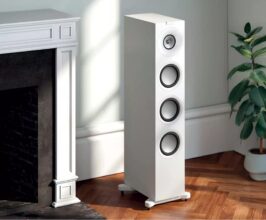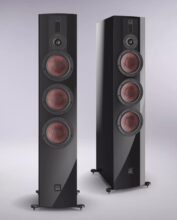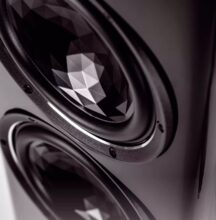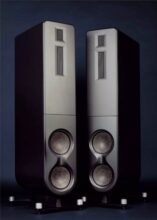JBL HDI-3600 Review – Go Big
JBL’s HDI-3600 floorstander has impact, says Noel Keywood.
If you want to go big with a loudspeaker – as in big sound, then JBL is your brand.This US company specialises in conspicuous power and they don’t let up.The large HDI-3600 floorstanders I’m reviewing here radiate bass from three drive units, just to make sure it gets through. I’ll say straight away they are designed to shake a house, just so you know in advance what we’re discussing here!
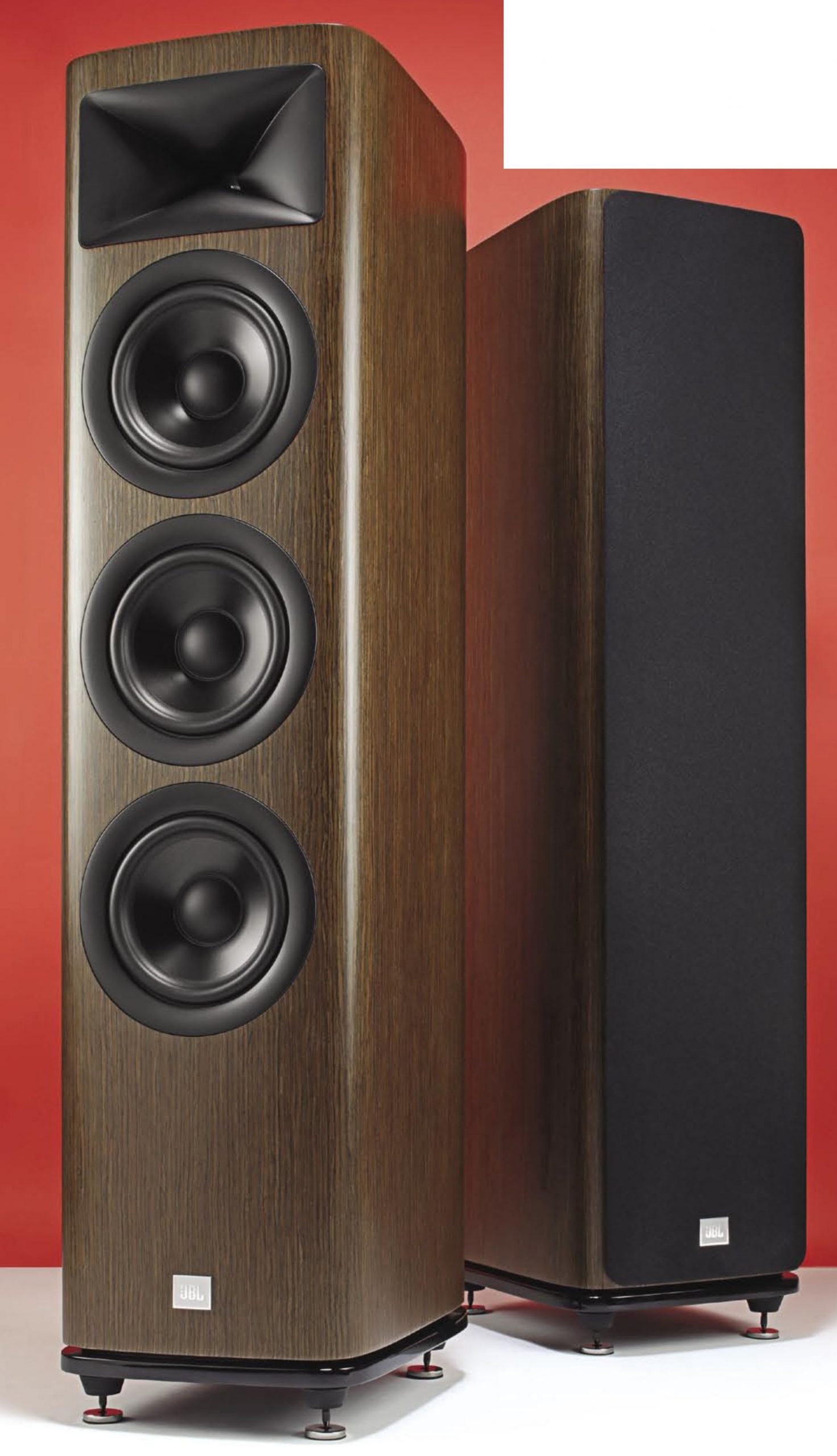
What JBL tell us is this loudspeaker uses “three 6.5in (165mm) aluminum matrix cone woofers”.You might be surprised to know that this still doesn’t add up to the area of one 12in bass unit, just bettering a 10in driver, so you can see why JBL have made them all radiate bass, because the more surface area the better. Only the top 6.5in unit handles mid-range also, reaching all the way up to the horn loaded tweeter situated directly above it. Surprisingly, the two lower bass units also cover a lot of midrange, making for a vertically extended line-source array. I suspect JBL have done this to improve stage height and presence; it’s usual to limit bass drivers to bass only (below 100Hz), but not here. So in a demo the HDI-3600 will sound rather different – larger – to other loudspeakers whose lower drivers handle bass only. Hence my comments on JBL going for a big sound.
Big bass comes from a big cabinet and this one looks slightly larger than most, although it’s only just above the popular Imetre mark, measuring 103cm high according to our tape measure – if not JBL’s.They get width and depth right though, at 255mm and 342mm, the latter including the (removable) grille that projects slightly. A weight of 28kg makes each speaker quite awkward to move: these are not lightweights. The cabinets feel very solid and are heavily braced internally JBL say.
Finishes are gloss black, satin grey Oak wood veneer, or satin Walnut wood veneer. Our review samples were the latter. The company say they use wood veneers, but these days real veneers are finished with acrylic coatings that make them look artificial, grain being filled in – and that’s how ours appeared. Tannoy used real wood veneers but they supplied a tin of wax with their loudspeakers and requested the curtains of the castle not to be opened to avoid discolouration from sunlight! Modern lacquers have advantages.
At rear of the cabinet lie two large ports that may well vent one internal chamber, since they gave identical output. Below them lie a conventional set of gold plated bi-wire terminals, with removable straps to facilitate bi-wiring. JBL quote a sensitivity of 90dB and that’s exactly what we measured, meaning amplifiers down to 20 Watts are suitable.Three large drive units can absorb power too, giving a maximum of 250 Watts they say, but this would be insanely loud. Even getting 60 Watts through them on peaks would be challenging, except in a very big room (>25ft long).
At top sits the company’s patented horn tweeter with ‘High Definition Waveguide technology1, driven by a patented 1in (25mm) compression driver. Just like that used in the HDI-1600, reviewed in our November 2021 issue, it covers a wide range, terminating in a distinctive peak above l6kHz.JBL make its output strong and obvious, but not excessive (see Measured Performance).This is an accurate loudspeaker, not an ‘enhanced’ one, but treble horns are usually quite obvious in their contribution, unlike smaller area domes.
SOUND QUALITY
The JBLs were run in then connected to our Creek Voyage i20 and – alternatively – our Icon Audio Stereo 30SE single-ended valve amplifier whose 30 Watts is plenty enough for such a ‘speaker. Having reviewed the HDI-1600 I suspected the Icon would be a symbiotic match for JBL’s horn tweeter. Cables were Chord Company Signature Reference (screened).
“The rumbling lows added weight and majesty, without becoming intrusive or overwhelming”
Sources were an Oppo UDP- 205D universal player acting as a CD transport, digitally connected by QED Quartz glass optical cable to the Creek’s internal AKM DAC. I also used Bluetooth fed by the HiRes section of an Onkyo HF Player app. on an iPhone IIX Pro that gives 24bit resolution, plus a wider selection of music from a MacBook Pro running Audirvana+ player software, specifically to access Chessky low bass test tracks as well as DSD transmitted as such, not PCM (iPhone/HF Player).
As measurement suggested the HD-3600s go low – very low.They start delivering deep bass almost before a track has started; when I pressed Play on my iPhone with Fleetwood Mac’s Dreams (24/96) I was hit immediately by powerful low bass that energised the floorboards and just about all else. Seemingly there was a whole extra octave of bass I rarely get to hear.There wasn’t the sonic grip of a big 12in driver, but there was prodigious power and presence all the same, John McVie’s bass line striding across the room at me like a hippopotamus – big, unstoppable.
That doesn’t sound complimentary, but it is; the HDI-3600s deliver bass with laconic ease and it brought a smile to my face, as well as better appreciation of all that goes on in the lower octaves we commonly don’t get to hear. And I was impressed that even in my 17ft long lounge they did not invoke boom, nor any sense of disproportion.The rumbling lows added weight and majesty, without becoming intrusive or overwhelming.The big ports and multiple bass units drive the air load effectively, rather than flailing at it (producing distortion) – and this is important in the home. With Dadawa’s Canton Story (CD) I was rather expecting the sudden entrance of the drum to be overwhelming – but it wasn’t.The big JBLs revealed its qualities better than most, but kept its power in correct proportion to the rest of the track, making for a great listen.
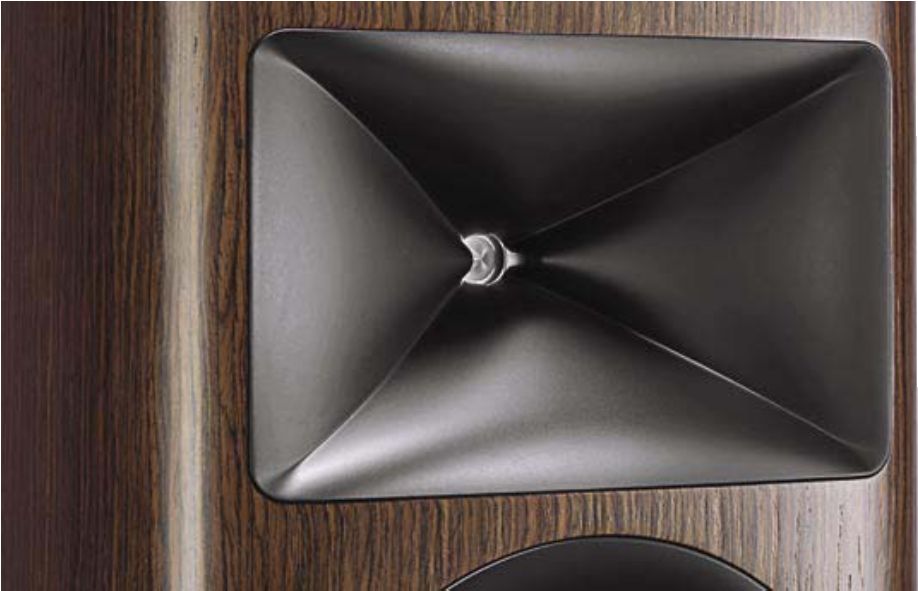
The big 3600s sounded smooth and dark in general tonality, something I appreciate. Music jumped out of a dark space should I better say, rather than from the brighter hue of zingy alloy drivers. This I like.With superb insight and detailing, a lovely smooth yet tonally accurate sound plus ground shaking lower octaves there was little to loathe and much to like here, much to like very much.

Johannette Zomer’s voice soared beautifully in Handel’s Lascia chi’io Pianga (DSD64), projected strongly outward at me but without blemish.
There were a few odd moments when the horn tweeter suddenly seemed to want to strut its stuff. One was with The Eagles ‘Somebody’ (CD) where high treble had a piercing quality that sounded to me I was hearing the tweeter’s treble peak above 16kHz, even though with steady signals I can’t hear up that far. Whatever, the horn tweeter is powerfully projective and can at times be a bit too strong with recordings that have their own problems.The ‘speakers were generally easy going yet balanced and revealing, but every now and then they would bite. JBL’s treble horn was the reason; its peak needs removal.
With the Icon Audio Stereo 30SE valve amplifier there was some loss of bass resolution: the HDI-3600s need electrical damping and here a valve amplifier does not suit. However, this was only obvious with prodigious deep bass; most of the time the two worked together beautifully, the Icon delivering a timbrally rich sound that fleshed out the shimmering strings of Nils Lofgren’s guitar in ‘Keith Don’t Go’.Would the tweeter’s peak above 16kHz drill my ears? It did not, but I was aware of strong high-highs on this track. And all the time the Icon’s output meter just bounced around against its zero end stop, even though I was playing loud.The ‘speakers are valve amplifier friendly, having a relaxed and easy demeanour, but the resultant sound is unusual in nature.
CONCLUSION
JBL’s HDI-3600s were laconic giants. They cruised through all I threw at them, rarely putting a foot wrong. From powerfully projected high treble down to deep room shaking subsonics, these loudspeakers carry a powerful punch that is the epitome of high fidelity.Yet they are also subtle and insightful too, just as good with the massed strings of an orchestra as with Rock. Now and then needles hit my ears, but for the most part I loved what I heard: exciting yet balanced and truthful. A great loudspeaker.

MEASURED PERFORMANCE
Frequency response of the HDI-3600 was essentially flat across the audio band, from a very low 30Hz up to 16kHz. The dip and peak around 55Hz is a phase rotation due to the room so can be ignored. A dip at 800Hz exists at the crossover point – but it is a small effect of little subjective consequence.
The lowest driver works up to 800Hz, the next up to 900Hz and the third up acts as a bass/midrange unit, reaching right up to 2kHz where it crosses over to the tweeter. So in effect there are three bass units, one midrange and one tweeter – an unusual arrangement that maximises bass cone area.
As with the smaller HDI-1600 reviewed in our November 2021 issue the horn loaded tweeter gives smooth, even output up to 16kHz, above which it peaks sharply; luckily, few can hear this high.
JBL have obviously designed the HDI-3600 to be technically accurate, rather than contrived. It will not sound overly bright, but the tweeter is no shrinking violet either. Our measurement is slightly off-axis (20degrees), with grille off. Putting the grille on made no difference. The speaker is best aimed straight down the room, its dispersion being sufficiently wide and smooth to make positioning uncritical.
This loudspeaker reaches very low: few run flat down to 30Hz. The ports (red trace) peak broadly around 40Hz, suggesting good bass damping. The impedance curve reflects this situation too, by a fairly wide dip around port frequency. Powerful low bass will be produced in any room, but especially a large one 18ft long or more.
Impedance (measured with pink noise) was exactly 6 Ohms and bass unit combined d.c.r. 4.3 Ohms, as seen at the terminals, all standard nowadays. Sensitivity was high at 90dB from one nominal Watt of input (2.8V) so amplifiers of 20 Watts or more suit, with little need for more than 100 Watts.
A nicely engineered loudspeaker that’s accurate, will have powerful bass yet not wallow. Very good all round.
NK
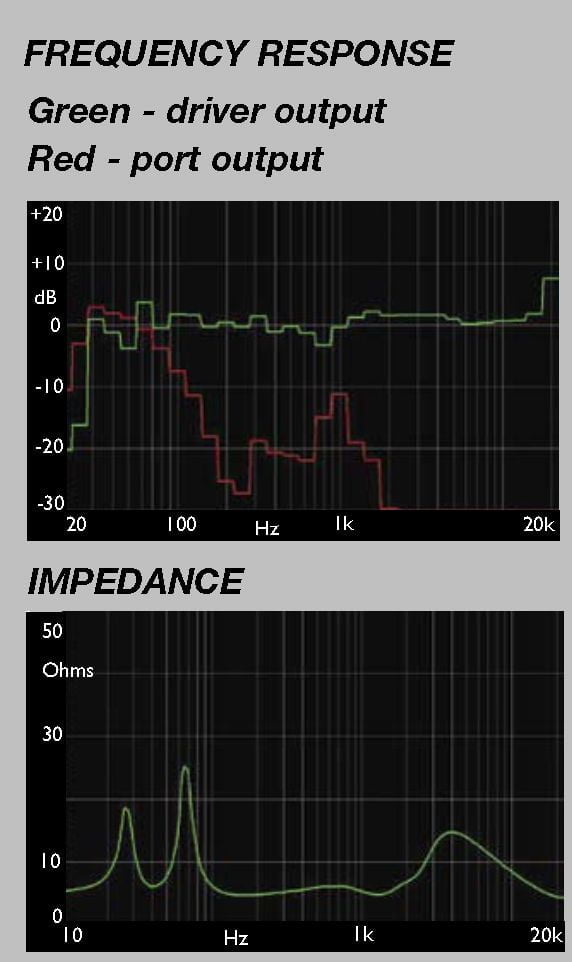
Verdict
When you purchase through links on our site, I may earn an affiliate commission. Here’s how it works.






